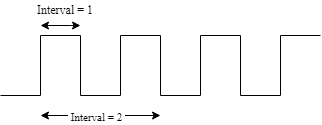timeIntervalError
Syntax
Description
[
measures the time interval error from input jittery waveform by using the specified symbol
time.TIE,TIEs] = timeIntervalError(x,y,SymbolTime = t)
[
measures the time interval error by using the specified sample interval and symbol
time.TIE,TIEs] = timeIntervalError(y,SampleInterval = s,SymbolTime = t)
[
measures the time interval error with respect to the reference waveform and specified sample
interval.TIE,TIEs] = timeIntervalError(y,yr,SampleInterval = s)
Input Arguments
Name-Value Arguments
Output Arguments
Version History
Introduced in R2024b
See Also
jitter (Mixed-Signal Blockset) | jitterTotal (Mixed-Signal Blockset) | jitterRandom (Mixed-Signal Blockset) | timingError (Mixed-Signal Blockset)
